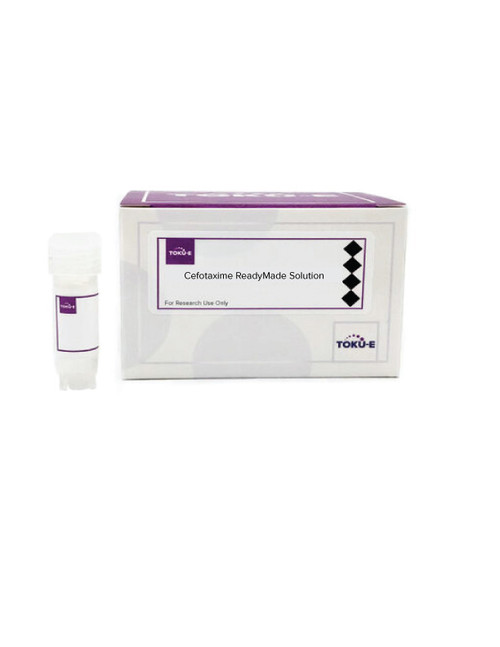Sulfamethoxazole ReadyMadeTM solution is provided as a sterile-filtered solution of Sulfamethoxazole formulated in DMSO at a concentration of 50 mg/ml. It has been filter-sterilized using a 0.22 μm filter.
Sulfamethoxazole is a bacteriostatic sulfonamide antibiotic that was first synthesized in 1957 by researchers at Shionogi Inc. in Japan and launched as Sinomin. Sulfamethoxazole has broad-spectrum antimicrobial activity and is normally paired with Trimethoprim, a dihydrofolate reductase inhibitor, which inhibits the reduction of dihydrofolic acid to tetrahydrofolic acid. Studies have shown that bacterial resistance develops more slowly with the combination of the two compounds than with either alone.
We also offer:
- Sulfamethoxazole (S045)
| Mechanism of Action | Sulfonamides, like sulfamethoxazole, inhibit the enzymatic conversion of pteridine and p-aminobenzoic acid (PABA) to dihydropteroic acid by competing with PABA for binding to dihydrofolate synthetase, an intermediate of tetrahydrofolic acid (THF) synthesis. THF is required for the synthesis of purines and dTMP and inhibition of its synthesis inhibits bacterial growth. |
| Spectrum | Sulfamethoxazole, like other sulfonamides, is a broad-spectrum antimicrobial inhibiting both Gram-positive and Gram-negative bacteria, as well as some protozoa, such as coccidia. They are considered ineffective against most obligate anaerobes. However, they may affect aerobic organisms that contribute to the lowered oxygen tension in the microenvironment and, as such, they may be useful in certain diseases involving Fusobacteria, although the organism itself is often resistant. Sulfamethoxazole has shown activity against Chlamydia trachomatis. |
| Microbiology Applications | Sulfamethoxazole (SMX) is commonly used in clinical in vitro microbiological antimicrobial susceptibility tests (panels, discs, and MIC strips) against Gram-positive and Gram-negative microbial isolates. Medical microbiologists use AST results to recommend antibiotic treatment options. Sulfamethoxazole can be added to Muller Hinton II agar for antibiotic susceptibility testing protocols. Recently, Sulfamethoxazole was among the top 6 of 187 compounds screened in silica for potential activity against SARS-CoV-2 using machine learning models and high-fidelity ensemble docking studies as part of a global expansion in knowledge of small-molecule ligands with binding affinity for S-protein and S-protein:human ACE2 receptor interface (Batra et al, 2020). |
| Plant Biology Applications | The sulfanilamide family comprises a clinically important group of antimicrobial compounds which also display bioactivity in plants. There is evidence that sulfanilamides, like Sulfamethoxazole, inhibit folate biosynthesis in both bacteria and plants. |
| Molecular Formula | C10H11N3O3S |
| Impurities | Selenium - Not more than 0.003%; Sulfanilic Acid Sulphanilamide - Not more than 0.2% |
| References |
Batra R et al (2020) Screening of therapeutic agents for COVID-19 using machine learning and ensemble docking studies. J. Phys. Chem. Lett. 11(17):7058-7065 Henry RJ (2012) The mode of action of Sulfonamides. Bacteriol. Rev. 175-84
|








